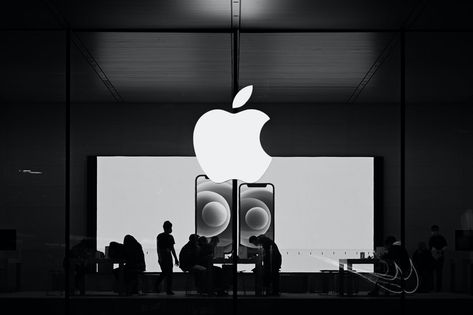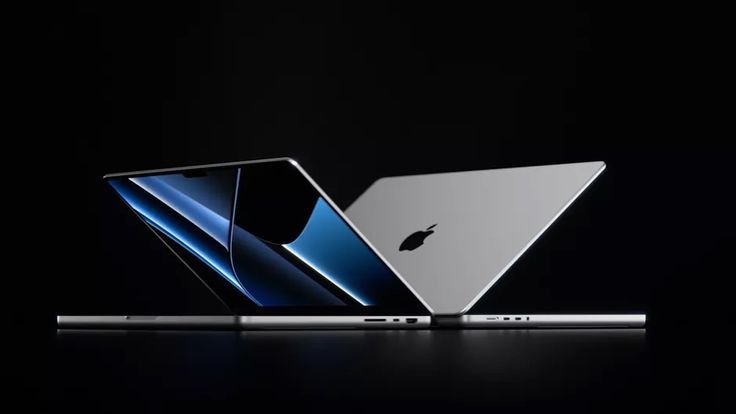Apple is preparing to introduce one of the most significant overhauls to its operating systems—iOS, iPadOS, and macOS—in recent years, drawing inspiration from its cutting-edge Vision Pro’s visionOS. This redesign is expected to usher in a more unified, intuitive, and futuristic interface across all of Apple’s devices. With the company’s reputation for pioneering user-friendly designs, this overhaul promises to reshape the way users interact with their iPhones, iPads, and Macs, creating a more seamless and interconnected ecosystem.
A New Era for Apple’s Software
The upcoming software update is poised to be the most transformative in years, following a pattern of major design changes. Apple’s last significant macOS redesign came with Big Sur in 2020, while iOS received a substantial overhaul with iOS 7 back in 2013. This new iteration represents a bold leap forward as it seeks to unify the experience across all Apple platforms. The update will go beyond simple visual improvements to create an entirely cohesive and fluid experience, making navigation smoother and interactions more intuitive.
The new design will also include major upgrades to core functionalities, ensuring that the software not only looks appealing but also enhances the overall performance and user satisfaction. Apple is expected to address both casual users and power users by refining multitasking, notifications, and file management systems, making them more efficient and tailored for different use cases.

Key Features of the Overhaul
Vision Pro-Inspired Aesthetics
Apple’s Vision Pro headset, which has made waves in the world of spatial computing, is expected to heavily influence the upcoming software update. The integration of design elements from visionOS will introduce rounded app icons, cleaner menus, and more polished system buttons. These design choices will enhance both the aesthetic appeal and the usability of the operating systems. Rounded edges, a hallmark of visionOS, will likely make the user interface feel more fluid and organic, contributing to an overall sense of harmony across the ecosystem.
Translucent effects and animations borrowed from the Vision Pro will likely add to the futuristic feel of the UI, making it not only more visually engaging but also more immersive. This updated look could bring a refreshing change, balancing beauty with functionality.
Cross-Device Consistency
One of the most anticipated features of this overhaul is the improved cross-device consistency. Apple’s ecosystem has always been lauded for its interconnectedness, but this update will take that concept even further. Users will notice a much more seamless experience when transitioning from an iPhone to an iPad or Mac. Whether they’re switching between devices for work, entertainment, or communication, the design of the OS will ensure that the experience feels natural and consistent.
Icons, system behavior, and UI elements will follow the same design language, making the learning curve negligible for users who frequently jump between Apple devices. This cross-platform coherence is especially important for users who rely on multiple Apple devices in their daily lives, as it eliminates friction when switching between iOS, iPadOS, and macOS.

Enhanced User Experience
The update will introduce refined animations and smoother transitions, which will not only enhance the visual appeal of the OS but also make interactions feel more natural. The introduction of subtle animations could make tasks like opening apps, switching between apps, and multitasking more fluid, reducing any jarring visual interruptions that could disrupt the experience.
The new update is also expected to improve accessibility, making it easier for users with diverse needs to interact with their devices. Features like VoiceOver, text-to-speech, and other assistive technologies are likely to be enhanced to make them more responsive and intuitive, ensuring that Apple’s products remain accessible to everyone.
New Widgets and Customization Options
Personalization will play a significant role in the upcoming software update. Apple is expected to bring new widgets with greater interactivity and functionality, allowing users to customize their home screens even further. These widgets could offer more dynamic content, such as live updates from apps, interactive controls, or even app-like experiences without launching a full application.
Moreover, users will likely be granted greater control over their home screen layouts and app organization, allowing them to customize their devices to an unprecedented degree. The home screen will become an even more personalized reflection of the user’s needs, offering a tailored experience that adapts to how they use their devices on a daily basis.
Improved Performance and Efficiency
Under the hood, the update will bring several performance optimizations. Apple is expected to focus on improving system performance by enhancing load times, battery efficiency, and overall system responsiveness. The company has always been known for its commitment to providing a seamless user experience, and these improvements will help maintain that reputation by ensuring that devices run faster, more smoothly, and more efficiently.
The update may also bring improved memory management, which could lead to smoother animations and better handling of background processes. This would allow power users to multitask more effectively, whether they’re editing photos, working on documents, or running demanding applications.
Integration of AI and Machine Learning
Artificial intelligence and machine learning will likely take center stage in this overhaul. Apple has long been integrating AI into its software, and the upcoming update could bring even more intelligent features. Siri, for instance, may see significant improvements, with smarter responses and the ability to better understand context, making it a more valuable tool for users.
Predictive text, auto-corrections, and real-time translations could also benefit from machine learning advancements. These features will become more accurate and efficient, offering users a more intuitive and personalized experience. Additionally, Apple may introduce new AI-driven capabilities that enhance productivity and streamline daily tasks, reinforcing the company’s commitment to cutting-edge technology.

Implications for Developers and Users
For developers, this design overhaul will require a period of adjustment. Apple’s new interface will introduce updated UI elements and new system behaviors, meaning developers will need to update their apps to align with the new design language. This could involve optimizing layouts, adopting new system features, and ensuring that apps perform well across all devices in the Apple ecosystem. Apple will likely provide detailed guidelines for developers to navigate these changes at WWDC 2025.
For users, this overhaul promises to deliver a more immersive, consistent, and enjoyable experience. The new UI and UX changes will make it easier to switch between devices while maintaining a coherent visual experience. The enhanced performance and AI integration will provide a more responsive and personalized environment, making everyday tasks more efficient and engaging.
Industry Trends and Competitive Landscape
Apple’s ambitious redesign is part of a larger industry trend focused on minimalism, spatial computing, and AI-driven user interfaces. Competing companies like Google and Microsoft have also been making strides in these areas, with Google’s Material You design and Microsoft’s integration of AI into its operating systems. Apple’s redesign is not just about catching up but setting the stage for the future of digital interaction. With its strong focus on design, accessibility, and usability, Apple’s updates will likely cement its place as a leader in the tech industry.
Expected Announcement and Release
The new software updates are expected to be unveiled during Apple’s Worldwide Developers Conference (WWDC) in June 2025. Following the announcement, a beta version will likely be available for developers and enthusiasts to try out. The full public rollout is anticipated to occur in the fall, marking the official launch of the redesigned operating systems. This major overhaul could redefine how users interact with Apple’s ecosystem, setting a new benchmark for design and functionality in the tech industry.
As Apple prepares to unveil these changes, the company is signaling a major shift in its approach to UI/UX design, creating a more immersive and visually compelling experience for its users. These updates could reshape not only the Apple ecosystem but also influence the broader industry’s approach to software design for years to come.
Related Blogs: https://ciovisionaries.com/articles-press-release/

